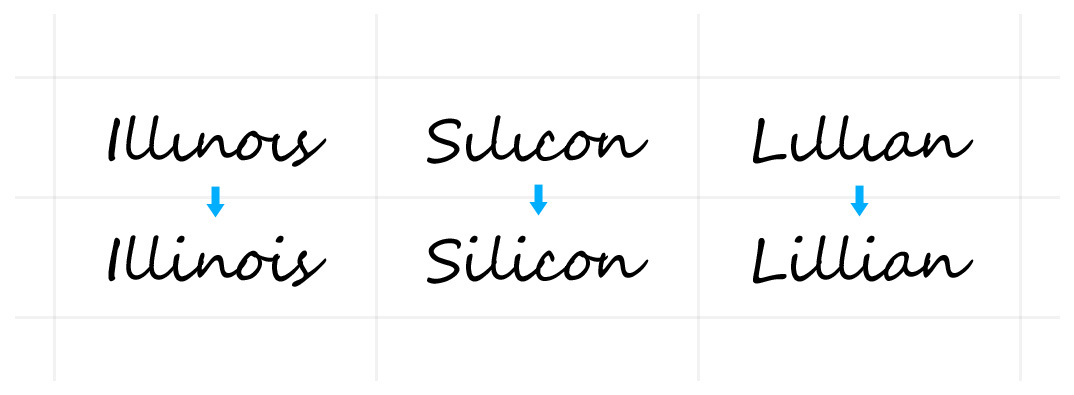Dot the ss

I am preparing now textures with letters for our toy with words. And such games have one peculiarity: if you don’t translate the game into any language, you cannot see purchases from the speakers of this language. Therefore, the release of the game will be localized to 42 languages. These are many, many different letters, each of which is processed in Photoshop and inserted into the texture, the place in which is worth its weight in gold. We have to delve into the device of modern alphabets in order to take only those letters that are really needed in modern words.
Immersed in this process, I discovered for myself how much the phrase “dot the point and” is not complete. The points are placed far not only from above.
The number of variants of writing Latin letters in Unicode is truly great. There are no dashes, dots or zagogulin next to the letters. These are mainly diacritical marks, indicating that this letter must be read in some other way. As a rule, over time, the number of accents in languages decreases. People try to simplify the alphabet. Really, after centuries of simplifying the alphabets are still unusual options? Yes, and what!
Let's start with the letter i . The phrase “dot the I” was born in the Middle Ages, when the scribes rewrote the texts in italics - without tearing off the pen. Wherein:
')
- The letter i without a point (just a short wand) merged with other letters, so it began to be highlighted with a dot on top.
- Since the word was often written together, all points were placed after writing the main part of the word.
And this phrase was born, a proverb, which means the completeness of some action or the absence of the unspoken, etc. Let's see how words are written with the letter i without dots and the same words, but already with dots above i . Does it really make sense at these points?

Although the scribes could hardly write these words, but the dots clearly help to see short sticks. Are there two points over i ? Yes, the French letter ï is still used.

In Russian, the letter i was used before the 1918 reform. Moreover, there was a time when it was written with two dots! It turns out that in the Russian language, too, dotted the point over I. And here is another interesting point: the letter s used to consist of two letters: i . Therefore, we can say that the scribes dotted the letter Y !
There are such languages where you have to place a lot of points. Among the languages with which I dealt, Finnish is the leader in the number of points above. Look here:

Three words and 26 dots above the letters! But the points are not only on top. For example, in Catalan, a dot can be placed between the letters of a single word.

They put a dot on top, put it on the side, don't they put it on the bottom? In Vietnamese set!

Vietnamese language, by the way, is well suited if you want to draw a lot of beautiful squiggles on Latin letters. Isn't that great?

In addition to points, there are many other modifications of letters, for example, strikethrough. Perhaps some of the letters themselves do not like native speakers and this rejection is expressed in strikethrough. See for yourself:

This is of course a joke, in every language the story of the appearance of crossed out letters has its own.
In Cyrillic, the same is interesting modifications of letters. For example, in the Kazakh language, some consonants appear legs! There are legs in the Russian alphabet in the letters D , C and Sh , but this is somehow customary, but the asymmetric leg of the letters K and H is unusual.

Learning the alphabets is surprisingly fascinating. As if you are immersed in other worlds. Maybe in the next life I could well become a linguist, but for now I need to “dot all the ss” - finish preparing the texture 2048x2048 with letters and finish the game itself.
Source: https://habr.com/ru/post/311566/
All Articles